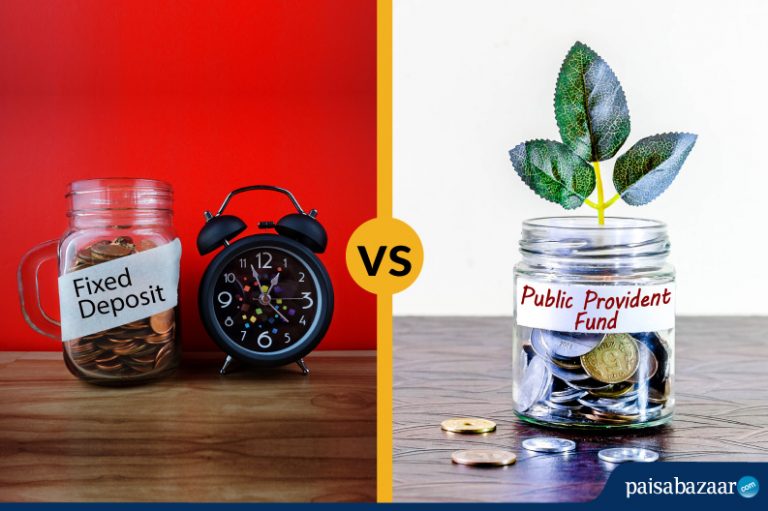
Fixed Deposits and Public Provident Fund are two of the most secure investment options available to the Indian investors. Both instruments are ideal options for risk-averse investors. But how do we choose between the two? Here is a guide to understanding the differences and commonalities, both.



8 Comments
sir i planned to invest 100000. which one is better PPF or FD. if FD Which bank is safe and better for interest rate
Hello Pradeep,
If we talk about interest rates, you’re getting 7.10% in PPF, whereas in FD, you can get up to 7.50% in Small Finance Banks, like North East Small Finance Bank. However, in most commercial banks, interest rates have fallen down to 6% -6.50%.
Now, let’s talk about the time period. If you’re planning to invest for a short duration, say 1-3 years, FD should be your choice. You get the option of premature withdrawal at nominal charges. But if you want to stay invested for longer durations, choose PPF. Your money will be invested for 15 years with few exceptions to premature withdrawal. (Read article).
Choose wisely. FD is lucrative and safe, PPF helps build a strong corpus but your liquidity gets compromised.
PLEASE let us know the safety of 5 yr FD in Suryodaya Bank
Suryodaya is a small finance bank. Deposits made in the bank are insured under the deposit insurance offered by the DICGC for up to Rs 5 crore.
I invest 200000 one time which option is better and which bank and any doubleing sceme available
Hi Vijay,
You cannot invest more than Rs. 1.5 lakh/year in PPF. Therefore, you should consider FD. (currently, Suryodaya Bank is offering 9% on 5 years FD).
Know the best FD interest rates here.
I want to invest Rs 5000/ per month what is the best option
Hi Shakha,
Between PPF and FD, you should go for PPF if you want to invest monthly. FD does not allow repetitive deposits – only a one-time deposit can be made in a fixed deposit. Whereas in PPF, you can deposit repeatedly.